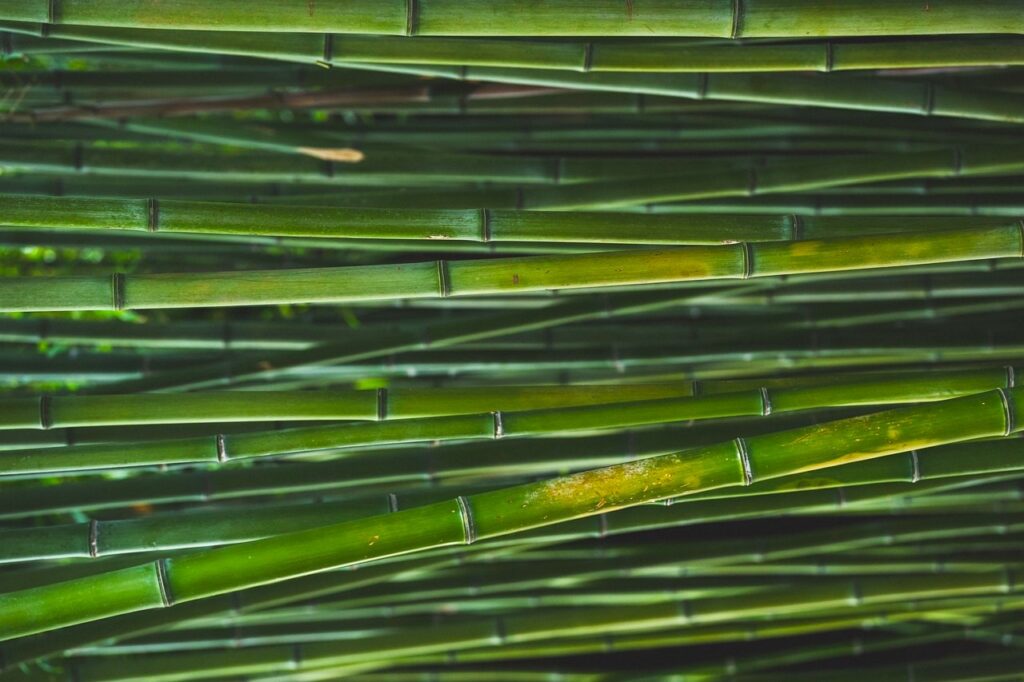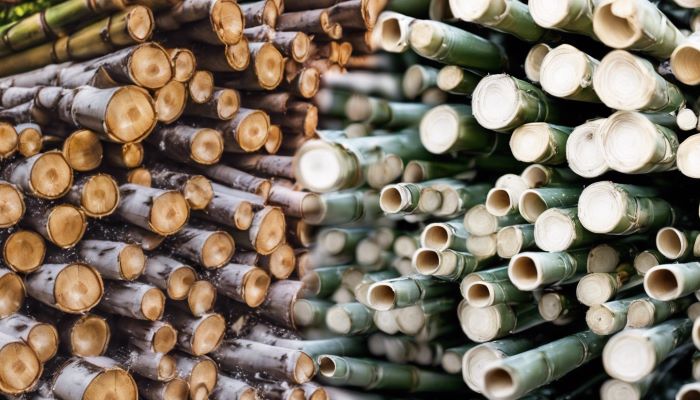The paper and pulp industry is grappling with sustainability. Most key factors that strain sustainability are all on the rise.
For example, demand for paper and pulp especially for packaging applications is not slowing down. Meanwhile solutions for wood pulp supply that were planted this year will take potentially decades before harvest.
These trends create a potent mix of challenges that lower the chances of maintaining a sustainable pulp and paper industry long term.
We need a hero – something that can relieve the pressure placed on wood based fibers production for the paper and pulp industry. Is bamboo the answer?
Target Market for Bamboo Paper Products
Bamboo pulp paper is already contributing towards sustainability of several key segments of the paper and pulp market. Printing paper, packaging materials, and sanitary products stand out as major areas ripe for this transformation.
A case in point, China, which leads countries in bamboo diversity with over 861 species, has consistently showcased bamboo’s versatility beyond traditional uses including molded fiber applications crucial for packaging solutions.
The shift towards bamboo in these sectors is not just about tapping into an abundant resource. It’s about leveraging a sustainable alternative that grows faster than conventional trees used in paper production. This rapid growth cycle makes bamboo an ideal candidate for meeting the high demand in printing and packaging industries without compromising environmental integrity.
Bamboo vs Wood Pulp
Currently, most paper products rely heavily on wood pulp. This dependence has significant environmental impacts due to deforestation and the long growth cycles of trees. However, bamboo presents a viable and eco-friendly substitute. Its fast growth rate and lower water usage make it a superior choice for sustainable production.
Moreover, bamboo’s natural properties offer comparable if not superior quality to traditional wood pulp in producing strong, durable paper products. The transition to bamboo can significantly reduce the ecological footprint of industries reliant on paper while maintaining product quality. This switch not only aligns with global sustainability goals but also meets consumer demands for greener alternatives.

Planting Bamboo vs Trees
Bamboo thrives in a variety of climates. It can grow in poor soil and does not require fertilizers or pesticides. This makes it a low-maintenance crop. Unlike many trees used in traditional paper production, bamboo reaches maturity in just 3 to 5 years. Trees, on the other hand, can take decades.
The planting process is straightforward. Bamboo needs little water to start growing and soon becomes self-sufficient. Its root system prevents erosion and improves soil quality. These features make bamboo an eco-friendly option for large-scale paper packaging.
Bamboo’s fast ROI
Bamboo’s rapid growth rate and minimal cultivation requirements translate into significant cost savings. These savings come from reduced labor and lower input costs.
One significant cost is logistics. Bamboo’s adaptability allows it to be grown in diverse regions across the globe. This versatility means that industries located far from traditional forests can still produce paper products efficiently.
Generally the closer a pulp factory is to the source, the cheaper it cost to produce. The ability to grow bamboo locally reduces transportation costs and carbon footprint, making it an attractive option for businesses aiming to meet the demands of environmentally conscious consumers.
Bamboo Regenerates, Wood Does Not
Bamboo stands out for its exceptional regenerative abilities. Unlike other plants, it can grow back from its own roots after being cut. This means farmers can harvest bamboo without uprooting it. The plant then regrows quickly, ready for the next cycle in as little as three to five years.
This regeneration process ensures a steady supply of raw material for bamboo pulp paper packaging. It eliminates the waiting period typically required for trees to mature. As a result, bamboo offers a more efficient and sustainable option for paper production.
The ability of bamboo to regenerate swiftly has profound implications for both sustainability and cost-efficiency in production. Firstly, it supports sustainable production practices by reducing the need to clear forests for paper materials. This helps in preserving biodiversity and maintaining ecological balance.
Secondly, the reduced need for replanting lowers labor costs significantly. Farmers can focus on harvesting without investing time and resources in planting new saplings. This not only makes bamboo pulp paper packaging an eco-friendly choice but also an economically viable one.
Bamboo grows Exponentially Faster than Trees

Bamboo stands out for its rapid growth. In fact, some species can grow up to 91 centimeters in one day! Unlike hardwood trees that require twenty years or more to mature, bamboo reaches harvest readiness in just 3 to 5 years.
This swift turnover is crucial for meeting the growing demand for eco-friendly packaging solutions and means manufacturers can respond quickly to market needs. It also ensures a steady stream of raw material for bamboo pulp and paper production.
Bamboo Selectively Harvested, Not Clear Cut
Sustainable harvesting of bamboo is possible with selective cutting to ensure only mature stalks are removed. This method preserves the root system, allowing the bamboo forest to regenerate quickly. It’s a stark contrast to deforestation practices seen in other industries.
By leaving younger plants and parts of the forest untouched, biodiversity thrives. Animals and other plant species continue to have a habitat. These practices also prevent soil erosion, ensuring that nutrients remain in the ground to nourish future bamboo crops.
This sustainable harvesting methods in paper and pulp extraction can significantly boost sustainability credentials. The key is where harvested areas regenerate over time. Companies can implement rotation systems and even base harvests that mimic natural cycles.
Bamboo can be harvested in a way that both secures a continuous supply of raw material and also contributes positively to carbon sequestration efforts.
Bamboo vs Wood in Pulp Processing
The process of turning bamboo into pulp starts with chipping the harvested stalks into small pieces. These chips are then subjected to a pulping process, similar to that used for wood, but with some crucial innovations.
One such technique involves using less water and chemicals compared to traditional methods. Another advancement is the use of enzymatic pulping. This method employs enzymes to break down the bamboo fibers, making it easier to separate the pulp from the raw material. It’s a cleaner alternative, significantly reducing the need for harsh chemical treatments.
Biodegrading of Bamboo vs. Wood Products
Bamboo-based paper products stand out for their rapid biodegradability. Unlike traditional paper made from wood, bamboo pulp breaks down into compost much faster.
According to the site goodstartpackaging.com, Bamboo is biodegradable and 100% compostable within 2–6 months, depending on your specific product and composting conditions.
Market reaction to bamboo paper and pulp for packaging
Recent studies, like the McKinsey report on US consumer attitudes towards sustainable packaging, highlight a growing demand for eco-friendly options. Approximately 70% of consumers are willing to pay more for items wrapped in sustainable materials. This includes compostable packaging made from bamboo pulp.
Regulations and consumer expectations are pushing brands towards greener solutions. Products certified with labels like FSC and PEFC show commitment to sustainable forest management. Bamboo fits well within this framework, offering a compostable alternative that meets both consumer preferences and regulatory standards.
Final Remarks
Bamboo pulp paper packaging represents a sustainable choice that aligns with both environmental needs and market demand. From planting to biodegrading, each step in the life cycle of bamboo showcases its superiority in eco-friendliness and efficiency. You’ve seen how bamboo’s rapid regeneration and maturation contribute to a more sustainable planet, making it an ideal resource for your packaging needs.
Embrace the change towards greener alternatives by integrating bamboo pulp paper into your product line. This move not only benefits the environment but also positions your brand as a leader in sustainability, appealing to a growing segment of eco-conscious consumers. Start making a difference today by choosing bamboo for your packaging solutions. Your commitment to sustainability is not just good for the planet—it’s also smart business.
Frequently Asked Questions
Who is the target market for bamboo paper products?
Bamboo paper products are ideal for eco-conscious consumers and businesses looking to reduce their environmental footprint. They cater to those seeking sustainable, biodegradable packaging solutions.
How quickly does bamboo regenerate after harvesting?
Bamboo is incredibly fast-growing, with some species capable of regenerating to full maturity within 3 to 5 years after harvesting, making it a highly renewable resource.
What makes bamboo an eco-friendly choice for packaging?
Bamboo grows rapidly without the need for fertilizers or pesticides and absorbs carbon dioxide in large quantities. Its ability to biodegrade quickly also reduces waste in landfills, making it a sustainable packaging option.
How is bamboo processed into pulp for paper production?
The process involves harvesting mature bamboo, which is then crushed and subjected to natural enzymes or mechanical methods to separate the fibers. These fibers are then pulped, washed, and bleached to create a sustainable material for paper production.
Can bamboo products fully biodegrade, and how long does it take?
Yes, bamboo products can fully biodegrade under the right conditions. Typically, it takes from a few weeks to a couple of months for bamboo packaging materials to decompose naturally, depending on the environment.
Why do businesses consider switching to bamboo pulp paper packaging?
Businesses started switching due to bamboo’s minimal environmental impact, rapid renewability, and its appeal to environmentally conscious consumers. It offers a sustainable alternative that can enhance brand reputation and contribute to corporate social responsibility goals.
